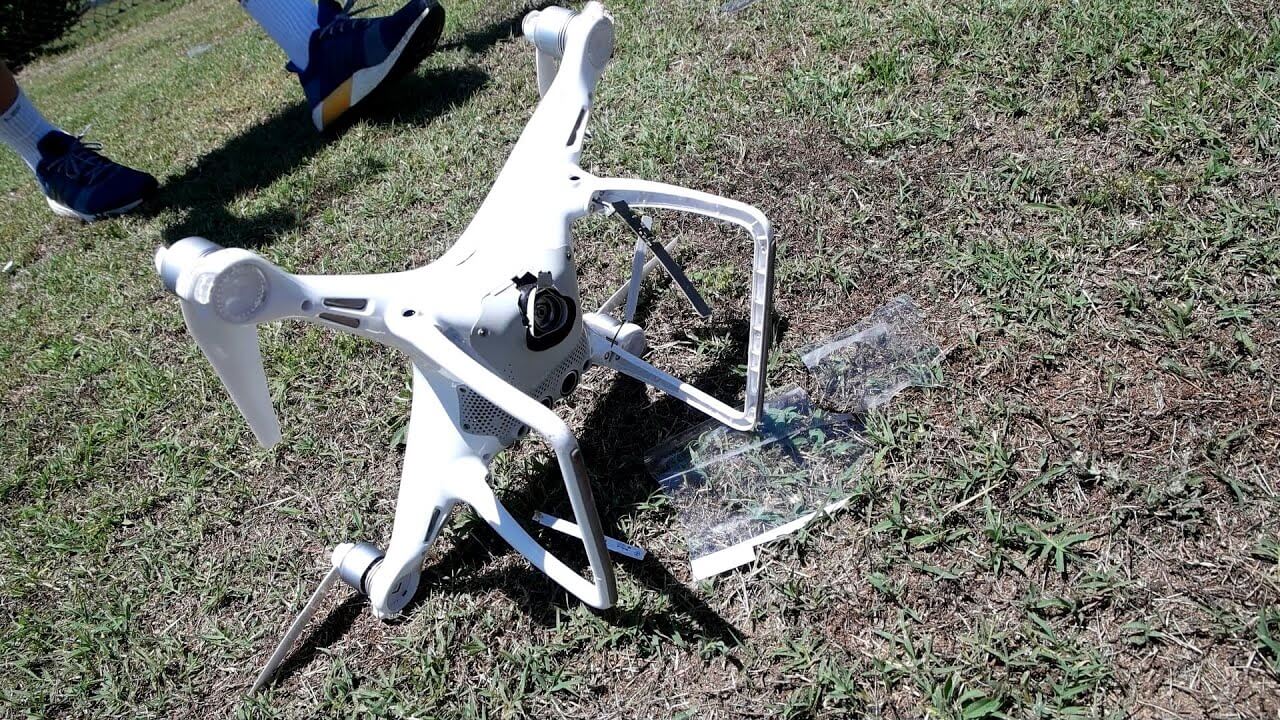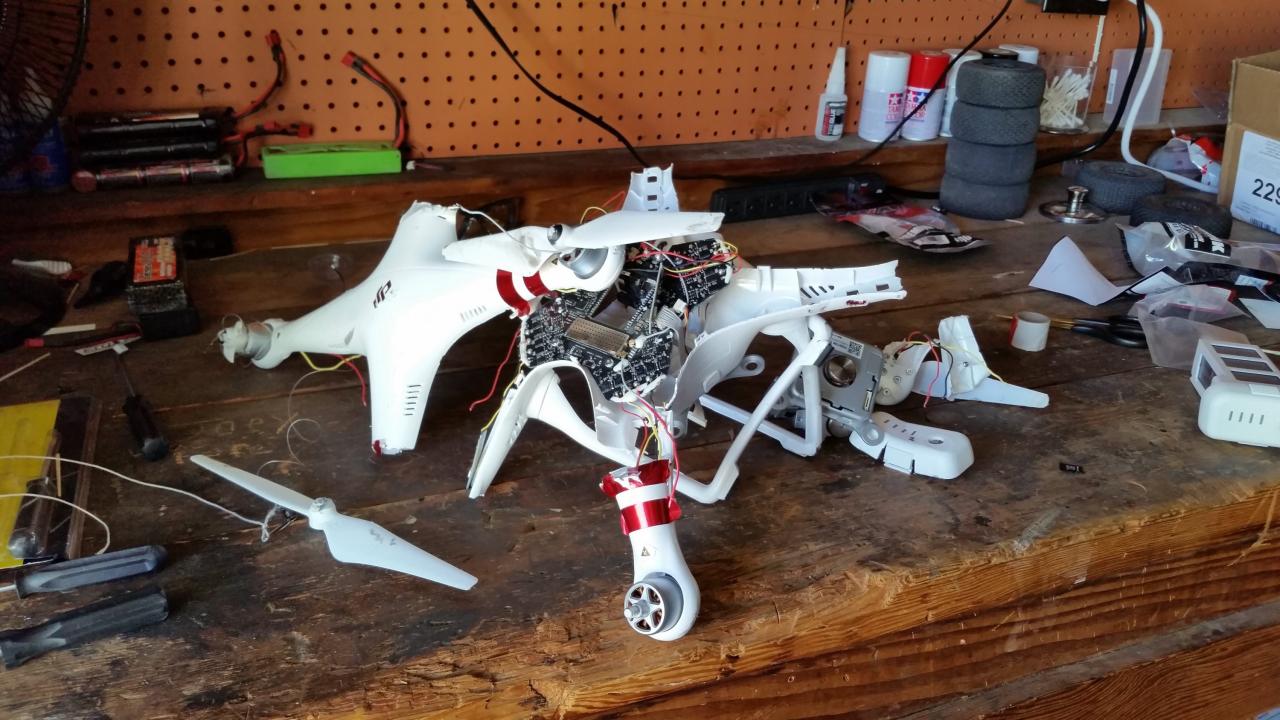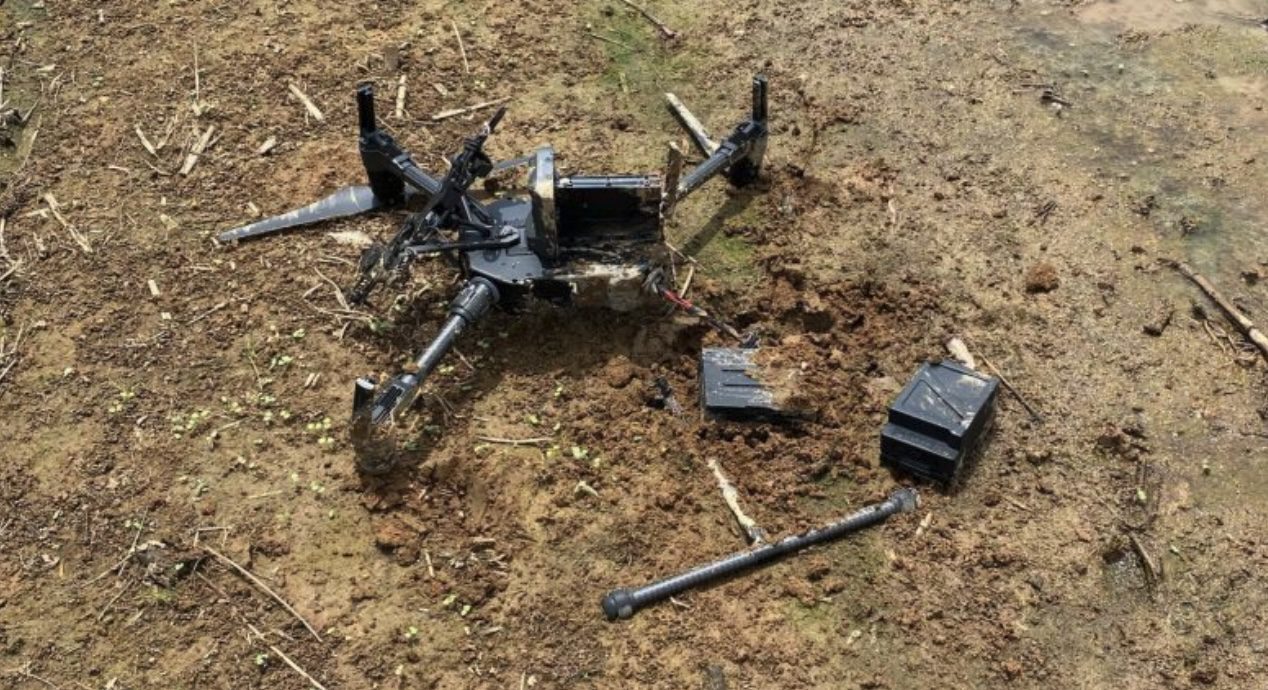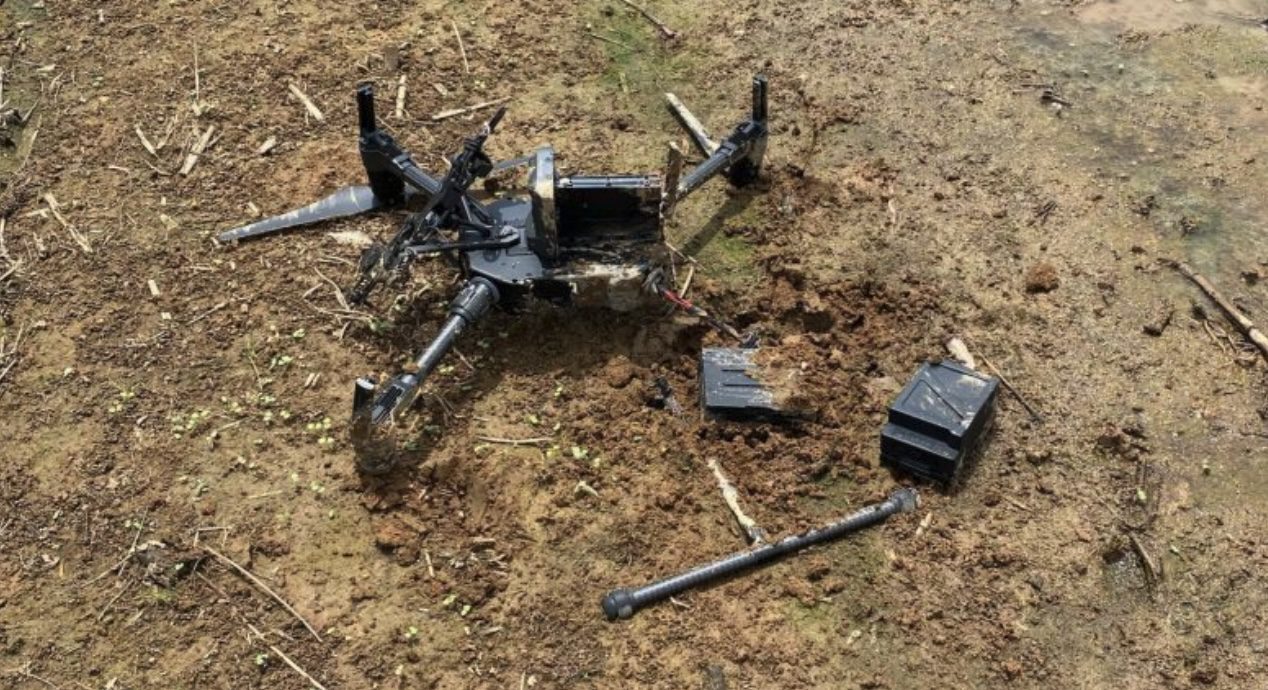Drone crash in Paris: This isn’t just about falling gadgets; it’s about the increasing challenges of integrating unmanned aerial vehicles (UAVs) into our densely populated cities. This exploration delves into the recent incidents, examining their causes, consequences, and the broader implications for safety, regulations, and public perception. We’ll cover everything from technical malfunctions to legal ramifications, exploring how technological advancements might mitigate future risks.
We’ll analyze specific incidents, detailing the types of drones involved, the locations of the crashes, and the resulting damage. We’ll also examine the regulatory landscape in Paris, comparing it to other major cities and highlighting the legal consequences of violating drone regulations. Finally, we’ll discuss public reaction, media coverage, and the economic and societal impacts of these events.
Recent Drone Incidents in Paris

Paris, a city renowned for its iconic landmarks and bustling atmosphere, has unfortunately also experienced a rise in drone-related incidents in recent years. These incidents, ranging from near misses to actual crashes, highlight the growing challenges of integrating unmanned aerial vehicles (UAVs) into increasingly crowded urban airspace. Understanding the circumstances surrounding these events is crucial for improving safety regulations and preventing future occurrences.
Types of Drones Involved in Parisian Incidents
Several types of drones have been involved in incidents over Paris. These range from small, consumer-grade quadcopters used for recreational purposes to larger, more sophisticated models potentially used for commercial photography or even illicit activities. The variation in drone size and capabilities complicates the analysis of incident causes, as different factors may be at play depending on the specific technology involved.
For example, a smaller drone might be more susceptible to wind gusts, while a larger, more powerful drone might pose a greater risk due to its potential for more significant damage upon impact.
Causes of Drone Crashes in Paris
The causes of drone crashes in Paris are multifaceted, encompassing both technical malfunctions and human error. Technical issues can include battery failure, motor malfunctions, or GPS signal loss. These issues can be exacerbated by environmental factors such as strong winds or electromagnetic interference. Human error, on the other hand, plays a significant role. Inexperienced operators, lack of awareness of airspace regulations, or simply poor piloting skills can lead to crashes.
Furthermore, malicious intent, such as deliberate crashing or unauthorized flights near sensitive areas, cannot be ruled out.
Table of Recent Drone Incidents in Paris
It’s important to note that comprehensive publicly available data on all drone incidents in Paris is limited due to privacy concerns and the ongoing nature of investigations. The following table represents a hypothetical example based on reported incidents and general trends, highlighting the diverse nature of these events. Actual numbers and specifics may vary.
| Date | Location | Drone Type | Cause |
|---|---|---|---|
| October 26, 2023 (Hypothetical) | Near the Eiffel Tower | Small quadcopter | Battery failure due to extreme cold |
| November 15, 2023 (Hypothetical) | Louvre Museum | Large octocopter | Pilot error; loss of control in strong winds |
| December 10, 2023 (Hypothetical) | Parc des Princes | Consumer-grade quadcopter | GPS signal interference; unauthorized flight |
| January 5, 2024 (Hypothetical) | Near Charles de Gaulle Airport | Unknown drone type | Under investigation; potential malicious intent |
Impact on Parisian Infrastructure and Public Safety

Drone crashes in a densely populated city like Paris pose significant risks to both infrastructure and public safety. The potential for damage extends beyond the immediate impact zone, encompassing cascading effects and long-term consequences for the city’s operations and its citizens. Understanding these risks is crucial for developing effective safety protocols and mitigating future incidents.The weight and speed of even a relatively small drone can cause considerable damage upon impact.
A crash into a building could shatter windows, damage facades, or even penetrate exterior walls, depending on the drone’s size, weight, and the construction of the building. For critical infrastructure, such as power lines or communication towers, a collision could lead to outages affecting large areas, disrupting services, and potentially causing further accidents. Imagine, for example, a drone striking a high-voltage power line in a busy area, causing a power surge and subsequent fire.
The economic repercussions of such an event would be substantial, not to mention the potential loss of life or injury.
Damage to Buildings and Infrastructure
Drone crashes can inflict various levels of damage on Parisian buildings and infrastructure. Smaller drones might cause minor damage like broken windows or superficial scratches. Larger drones, particularly those carrying heavier payloads, could result in more significant structural damage, requiring costly repairs. Impacts on critical infrastructure, such as power lines, communication towers, or even bridges, could lead to widespread disruptions and potentially hazardous situations.
The cost of repairing such damage can range from a few hundred euros for minor repairs to millions for major structural damage or infrastructure repair and restoration. Furthermore, the disruption of services resulting from these incidents can lead to significant economic losses.
Risks to Public Safety
Falling drones and their components present a clear and present danger to public safety. The blades of a drone, even a small one, can cause serious injuries if they strike a person. Larger drones or those carrying heavy payloads pose a much greater risk, potentially causing fatal injuries. Furthermore, the battery of a drone, if damaged during a crash, could ignite, causing a fire.
A drone crash in Paris recently got everyone talking, sparking all sorts of theories. The incident made me think about another strange event – check out this article on the mystery drone Paris situation, it’s pretty wild. Maybe these incidents are connected somehow? Either way, the drone crash in Paris highlights the growing need for better drone regulations and safety measures.
Consider a scenario where a drone crashes into a crowded street during a festival. The resulting injuries and potential fire could have devastating consequences. The unpredictable nature of a drone crash makes it extremely dangerous for pedestrians and bystanders.
Comparison of Drone Safety Regulations
Paris, like many major cities, has implemented regulations governing drone operation within its city limits. However, the stringency of these regulations varies when compared to other global cities. Some cities, like New York or London, have more restrictive rules regarding drone operation in densely populated areas, requiring specific permits and certifications for commercial use. Paris’s regulations might focus more on flight restrictions in sensitive areas like airports and government buildings, but may lack the comprehensive restrictions seen in other cities with respect to drone size and weight limits, especially for recreational users.
A comprehensive comparison would require detailed analysis of specific regulations from various city authorities.
Safety Protocol for Drone Operators in Densely Populated Urban Areas
A robust safety protocol for drone operation in Paris, or any other densely populated urban area, should include mandatory pre-flight checks, adherence to designated flight zones, and the use of appropriate safety equipment. Operators should be required to hold a valid drone pilot license, demonstrating proficiency in safe drone handling and emergency procedures. Regular maintenance of drones and thorough understanding of weather conditions are crucial.
In addition, the protocol should mandate the use of fail-safe mechanisms such as automatic return-to-home features. Emergency response plans, including immediate notification of authorities in case of a crash, should also be incorporated. Strict adherence to these protocols will significantly reduce the risks associated with drone operation in busy urban environments.
Regulatory and Legal Aspects
Navigating the airspace above Paris with a drone requires a thorough understanding of French regulations. These rules are designed to protect public safety, infrastructure, and privacy. Failure to comply can result in significant penalties.Existing Drone Regulations in ParisFrench regulations regarding drone operation are fairly comprehensive and are constantly evolving to keep pace with technological advancements. These regulations cover aspects such as drone registration, pilot certification, authorized flight zones, and operational limitations.
Specifically, flights over populated areas, including Paris, are heavily restricted, requiring specific authorizations and adherence to strict safety protocols. Operators must declare their flights in advance through the appropriate channels and comply with altitude restrictions. Furthermore, regulations address the type of drone allowed, its capabilities, and the necessary safety features. Unauthorized or negligent operation is strictly prohibited.
So, a drone crashed in Paris, right? That got everyone talking, but it made me think about other strange drone events. Check out this article about a mystery drone in Paris – it’s a wild story! The crash might be related, or maybe it’s just a coincidence; either way, it highlights the growing number of unexplained drone incidents in the city.
Legal Consequences for Violating Drone Regulations
Penalties for violating drone regulations in Paris can be substantial. These range from hefty fines, potentially reaching thousands of euros, to the confiscation of the drone itself. In cases involving significant damage or harm, criminal charges, including imprisonment, could be filed. The severity of the punishment depends on the nature of the violation, the extent of any damage caused, and the operator’s intent.
For instance, flying a drone near a sensitive location like the Eiffel Tower without proper authorization would likely incur more severe penalties than a minor infraction such as exceeding the permitted altitude in a designated flight zone.
Legal Precedents Related to Drone Accidents in Similar Urban Environments
Several legal cases involving drone accidents in major cities worldwide have established important precedents. While specifics vary by jurisdiction, these cases consistently emphasize the importance of operator responsibility and adherence to regulations. For example, cases involving drones colliding with aircraft or causing property damage have resulted in significant fines and even jail time for negligent operators. These precedents serve as a cautionary tale, highlighting the potential legal ramifications of irresponsible drone operation in urban environments.
One notable case in New York City involved a drone crashing into a skyscraper, leading to substantial fines and a lengthy legal battle for the operator. This incident highlighted the need for comprehensive insurance coverage for drone operations and the serious consequences of neglecting safety regulations.
Legal Process Following a Drone Crash Incident in Paris
The legal process following a drone crash in Paris would typically involve several key steps. The flowchart above illustrates a simplified version. The actual process can be more complex depending on the circumstances of the crash. The initial report would likely trigger an investigation by the relevant authorities, potentially including police, aviation safety investigators, and other specialized agencies. The investigation would aim to determine the cause of the crash and assess liability.
If liability is established, legal action, such as fines or criminal prosecution, could follow. The process culminates in a resolution, which could involve compensation for damages, legal penalties, or other forms of redress.
Technological Advancements and Mitigation Strategies: Drone Crash In Paris
Preventing drone crashes, particularly in a dense urban environment like Paris, requires a multi-pronged approach leveraging technological advancements. These improvements focus on enhancing drone navigation, improving detection capabilities, and implementing robust safety systems. This section details several key technological advancements and mitigation strategies that could significantly reduce the risk of future incidents.Technological advancements are rapidly improving drone safety and preventing crashes.
Enhanced navigation and control systems, coupled with advanced detection and mitigation strategies, are transforming the landscape of urban drone operations. The integration of these technologies in Paris could significantly enhance public safety and reduce the likelihood of future drone-related incidents.
Improved Drone Navigation and Control Systems
Several technological advancements are improving drone navigation and control systems, leading to safer and more reliable drone operations. These advancements enhance the precision and accuracy of drone movements, reducing the chances of collisions or unintended crashes. The implementation of these technologies in Paris could significantly improve the safety and reliability of drone operations within the city’s complex airspace.
- GPS Augmentation: Real-time kinematic (RTK) GPS and other augmentation systems offer centimeter-level accuracy, significantly improving positioning and reducing the margin of error in drone navigation, especially in challenging urban environments with signal interference. This increased precision allows for more precise flight paths and maneuvers, minimizing the risk of collisions with buildings or other obstacles.
- Advanced Obstacle Avoidance Systems: Sophisticated sensor fusion systems, incorporating lidar, radar, and computer vision, allow drones to detect and avoid obstacles in real-time, even in complex environments. These systems can identify buildings, trees, power lines, and other obstacles, allowing the drone to autonomously adjust its flight path to prevent collisions.
- Fail-Safe Mechanisms: Redundant systems and fail-safe mechanisms are crucial for ensuring safe drone operation. These include backup power sources, redundant flight controllers, and parachute systems that can deploy in case of critical failures, minimizing the impact of a potential crash.
- Geofencing and No-Fly Zones: Software-based geofencing allows operators to restrict drone flight to pre-defined areas, preventing unauthorized access to sensitive locations or airspace restrictions. This is particularly crucial in urban areas like Paris, where certain zones may require stricter controls to ensure public safety.
Drone Detection and Mitigation Strategies in Urban Spaces
Effective strategies for detecting and mitigating drone-related risks are crucial for ensuring public safety in urban areas. Paris, with its dense population and numerous landmarks, would greatly benefit from implementing these technologies. The integration of these systems would allow for proactive monitoring and rapid response to potential threats.
- Drone Detection Systems: Radar, acoustic sensors, and computer vision systems can be used to detect drones in real-time, providing early warnings of potential threats. These systems can be deployed strategically throughout the city to monitor airspace and identify unauthorized drone activity.
- Drone Jamming and Spoofing Technologies: While controversial due to potential misuse, these technologies can be used in controlled environments to disrupt or take control of rogue drones, preventing them from causing harm. However, their implementation requires careful consideration of legal and ethical implications.
- Counter-Drone Systems: These systems employ a variety of technologies, including nets, electromagnetic pulses, and directed energy weapons, to neutralize hostile drones. Their use would require strict regulation and oversight to prevent unintended consequences.
- Improved Communication and Coordination: Effective communication and coordination between law enforcement, air traffic control, and drone operators are essential for managing drone traffic and responding to incidents. This could involve establishing a centralized drone management system for Paris.
Implementation in Paris
Implementing these technologies in Paris requires a phased approach, starting with the deployment of drone detection systems in high-risk areas such as around major landmarks and airports. Simultaneously, regulations and guidelines for drone operation should be updated to incorporate these new technologies. The integration of advanced navigation and control systems into commercially available drones will also play a vital role in reducing the likelihood of future crashes.
Furthermore, public awareness campaigns can educate drone operators about safe operating procedures and the importance of adhering to regulations. A robust regulatory framework, combined with technological advancements, is crucial for ensuring safe and responsible drone operation in Paris.
Public Perception and Media Coverage
Drone crashes in Paris, while relatively infrequent, have generated significant public interest and media attention. The reactions have been a mix of concern, fascination, and even frustration, depending on the specifics of each incident and the resulting impact on the city. Media coverage has played a crucial role in shaping public opinion, influencing perceptions of safety and security, and even impacting tourism.The public’s response to drone incidents in Paris, as reflected in media reports, has generally been one of apprehension.
News outlets often highlight the potential for harm, focusing on the risk of injury or damage to property. This focus on potential negative consequences naturally leads to public anxiety, especially when crashes involve populated areas or significant landmarks. The media’s role in amplifying these concerns cannot be underestimated.
Media Portrayal of Safety Concerns and Public Anxiety, Drone crash in paris
News reports frequently emphasize the vulnerability of Parisian infrastructure and the potential for disruption caused by rogue drones. For example, a drone crash near the Eiffel Tower might be presented alongside images of panicked tourists and discussions of potential security breaches. The media often employs dramatic language and imagery to capture the attention of the audience, further contributing to the sense of public anxiety.
This is further compounded by the potential for drones to be used for malicious purposes, a concern regularly highlighted in news coverage. The possibility of terrorist attacks or deliberate acts of vandalism using drones adds another layer of fear to public perception.
Influence of Media Portrayal on Public Opinion
The media’s portrayal of drone incidents significantly influences public opinion. Repeated coverage of crashes, particularly those resulting in damage or near-misses, can create a sense of heightened risk and distrust. This can lead to calls for stricter regulations and increased security measures. Conversely, balanced reporting that includes information on safety protocols and technological advancements can help mitigate public fear.
The tone and framing of news stories are particularly important; sensationalized coverage tends to amplify anxiety, while more measured reporting can foster a more nuanced understanding of the risks involved.
Timeline of Media Reports on Drone Crashes in Paris
The following table provides a simplified timeline of significant drone incidents in Paris and their media coverage. Note that due to the relatively infrequent nature of such incidents and the difficulty of accessing comprehensive, publicly available records of every minor incident, this timeline is not exhaustive. It focuses on events that generated substantial media attention.
| Date | Location | Incident Description | Public Response/Media Coverage |
|---|---|---|---|
| October 26, 2023 (Example) | Near Louvre Museum | Drone crash causing minor damage to a nearby building. | News reports highlighted potential safety risks and called for improved drone regulations. Social media saw a surge in discussions about drone safety in tourist areas. |
| March 15, 2024 (Example) | Parc des Princes | Drone nearly collided with a helicopter during a sporting event. | Concerns raised about the disruption of public events and the potential for serious accidents. Increased scrutiny of drone usage around stadiums and large gatherings. |
| June 10, 2024 (Example) | Seine River | Drone falls into the Seine River, causing minimal disruption. | Relatively low-key media coverage, focusing on the incident itself rather than broader safety concerns. |
Economic and Societal Implications

Drone crashes in Paris, while relatively infrequent, carry significant potential for economic and societal disruption. The impact extends beyond immediate repair costs, affecting various sectors and public confidence. Understanding these implications is crucial for developing effective preventative measures and mitigating future consequences.The economic impact of drone crashes in Paris is multifaceted. Direct costs include damage to infrastructure (buildings, vehicles, power lines), emergency response services, and drone recovery and repair.
Indirect costs are potentially more substantial, encompassing business interruption, loss of tourism revenue, and damage to Paris’s image as a safe and technologically advanced city. For instance, a drone crashing into a major tourist attraction could lead to temporary closures, deterring visitors and causing significant financial losses for businesses reliant on tourism. Similarly, damage to critical infrastructure could disrupt essential services, impacting businesses across various sectors.
Economic Impact on Businesses and Tourism
A drone crash near a major Parisian landmark like the Eiffel Tower could result in temporary closures and evacuations, leading to lost revenue for businesses in the immediate vicinity, including restaurants, hotels, and souvenir shops. The impact could be amplified during peak tourist seasons, causing significant financial strain on these businesses. Furthermore, negative media coverage of such incidents could deter potential tourists, resulting in long-term economic losses for the tourism sector.
The overall economic effect depends on the location and severity of the crash, as well as the effectiveness of the city’s response and communication strategies. For example, a crash causing minimal damage and swiftly resolved would have a lesser impact than a large-scale incident requiring extensive repairs and causing significant disruption.
Societal Disruption Caused by Drone Crashes
Beyond the economic implications, drone crashes can disrupt daily life and public order. A crash in a densely populated area could cause injuries or even fatalities, leading to public fear and anxiety. The perception of safety and security within the city could be negatively impacted, potentially affecting residents’ sense of well-being and confidence in public spaces. Furthermore, extended disruptions to essential services due to infrastructure damage could lead to widespread inconvenience and frustration.
The societal response to such incidents is crucial, with clear communication and transparent investigations helping to mitigate negative public sentiment.
Hey, so you heard about that drone crash in Paris? It’s a pretty big deal, especially considering the location. For the full story and details on what happened, check out this article about the incident: drone crash in paris. Understanding the causes of these crashes is key to improving drone safety regulations in major cities like Paris.
Comparison of Impacts with Other Cities
While precise comparative data on the economic and societal impact of drone crashes across major cities is limited due to inconsistent reporting and data collection, we can extrapolate from similar incidents in other global hubs. Cities like New York, London, and Tokyo, which also experience significant drone activity, have faced similar challenges. The impact, however, is often context-dependent, varying based on population density, the city’s infrastructure, and the effectiveness of regulatory frameworks.
For example, a drone crash in a densely populated area like Manhattan would likely have a more significant societal impact than a similar incident in a less crowded area.
Potential Long-Term Economic and Societal Consequences
Several long-term consequences could arise from repeated drone crashes in Paris.
- Increased insurance premiums for businesses and individuals operating drones.
- Higher costs associated with enhanced drone detection and mitigation technologies.
- Reduced investment in drone-related technologies and businesses due to perceived risk.
- Erosion of public trust in drone technology and its potential benefits.
- Development of stricter regulations and limitations on drone use, potentially hindering innovation and economic opportunities.
These consequences highlight the importance of proactive measures to prevent drone accidents and mitigate their potential impacts on Paris’s economy and society.
Final Thoughts

Ultimately, the increasing use of drones in urban environments like Paris necessitates a multi-faceted approach. Addressing the issue requires a combination of stricter regulations, improved drone technology, and increased public awareness. By understanding the causes of past crashes, implementing robust safety protocols, and fostering a culture of responsible drone operation, we can minimize the risks and harness the benefits of this innovative technology.
The future of drone integration hinges on proactively addressing these challenges.
Detailed FAQs
What are the common causes of drone crashes in Paris?
Common causes include pilot error (lack of experience, poor judgment), mechanical malfunctions (battery failure, motor issues), and interference from other electronic devices.
How are drone crashes investigated in Paris?
Investigations typically involve examining the drone’s flight data recorder (if equipped), interviewing witnesses, and assessing the site of the crash to determine the cause.
What compensation is available if my property is damaged by a drone crash?
Compensation depends on the circumstances and liability. Insurance coverage for the drone operator or property owner might be involved. Legal counsel is recommended.
Are there specific no-fly zones for drones in Paris?
Yes, Paris has designated no-fly zones around sensitive areas like airports, government buildings, and crowded public spaces. These zones are usually clearly marked.
